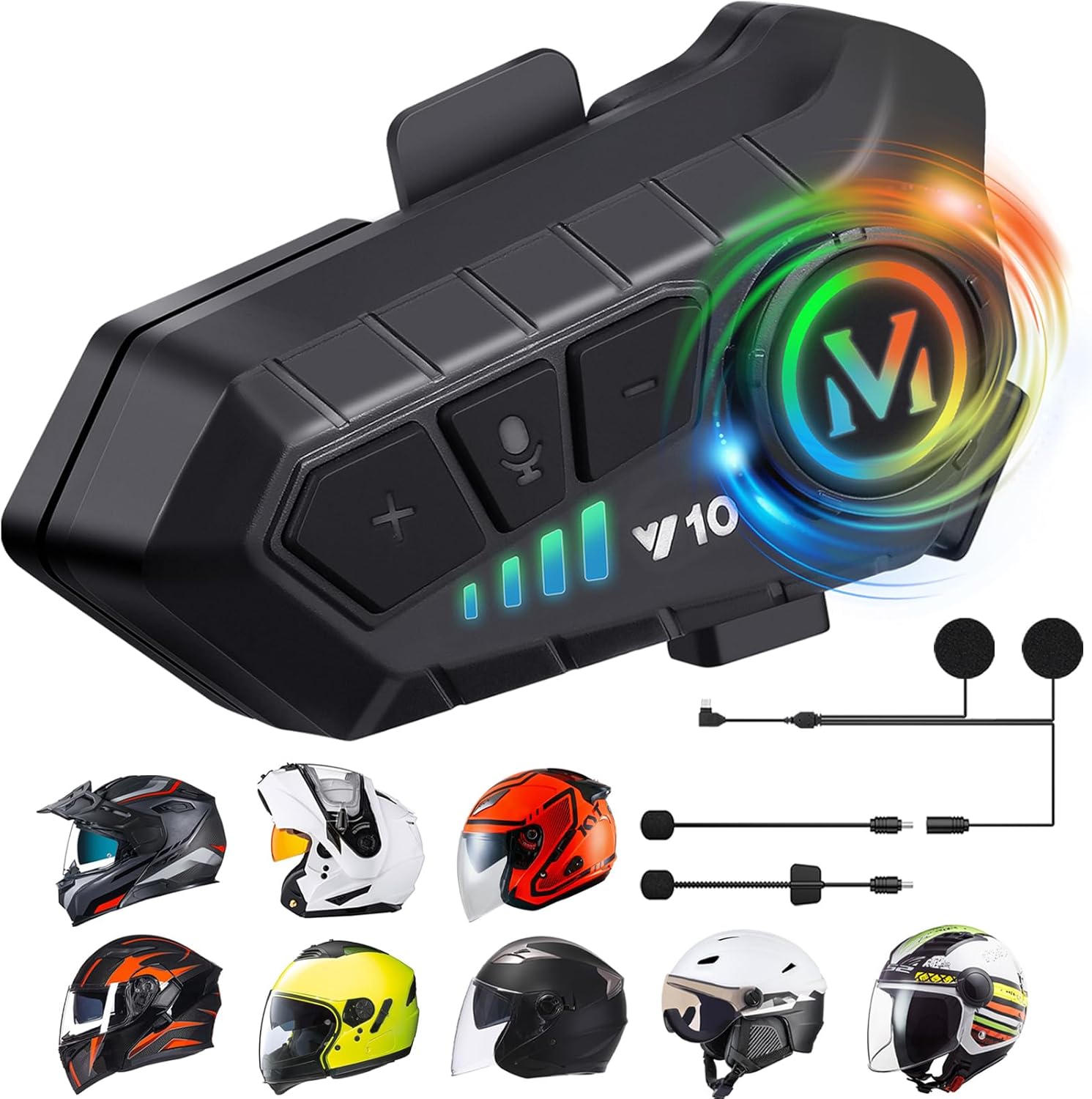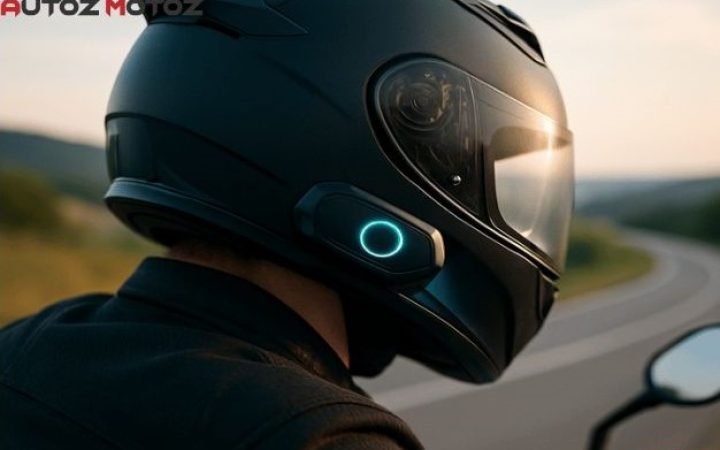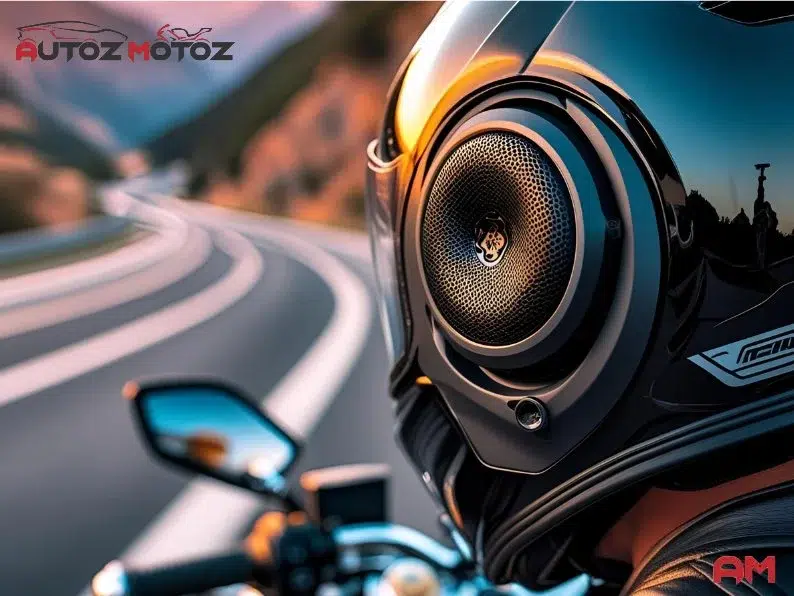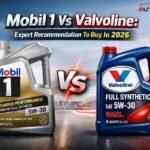There are compact audio devices designed for integration within motorcycle helmets, allowing riders to listen to music, receive GPS directions, or conduct phone calls without removing their gear by using a helmet speaker for a better experience.
The best devices enhance the riding experience by providing audio access without compromising situational awareness or comfort, making them valuable upgrades for daily riders and touring enthusiasts alike. Motorcycling does not necessitate sacrificing music or communications.
Looking for the ultimate audio experience on the road? Discover the Best Speaker—the perfect accessory to enhance your riding adventures with crystal-clear sound, seamless connectivity, and unbeatable comfort. Whether you’re a daily commuter, a weekend rider, or a touring enthusiast, the right helmet speaker can elevate your journey, keeping you connected and entertained while ensuring safety. Dive into our comprehensive guide to find the top helmet speakers that combine cutting-edge technology with durability so you can enjoy superior sound quality wherever your ride takes you.
Safety and Navigation
Whether on the highway or navigating city streets, helmet audio systems make it easier to stay connected and entertained. The perfect balance of sound quality, comfort, and safety, allowing riders to enjoy music and GPS directions while remaining focused on the road. This guide will explore top-rated helmet speakers and assist in selecting the ideal pair for your helmet and riding style.
Staying connected and entertained while riding is no longer a luxury — it’s practically a necessity. Whether you’re cruising down the highway on your motorcycle, carving slopes on your snowboard, or cycling through mountain trails, having the right helmet speaker makes all the difference. The best helmet speaker combines quality audio, seamless connectivity, comfort, and safety—all packed into a compact, rugged design that fits snugly in your helmet.
But with so many options on the market in 2025, how do you know which helmet speaker is worth your money? In this comprehensive guide, we review the top helmet speakers available today, covering features, pros and cons, audio quality, battery life, ease of use, and price. We’ve also included a buyer’s guide to help you make the smartest choice based on your unique needs.
Why Use Motorcycle Helmet Speakers?
While using earbuds or phone speakers might seem like quick solutions for on-the-go audio, they fall short when it comes to motorcycle riding with such a nice, smoother experience. Earbuds can be uncomfortable under helmets, may fall out during rides, and even pose safety risks by blocking important road noise. On the other hand, Phone speakers offer poor sound clarity at high speeds and drain your battery quickly.
Pre-Discussion
Before setting up, it is important to understand the legal and safety implications. Laws vary by region—some areas allow as long as they do not obstruct your ability to hear ambient traffic sounds, while others restrict any in-helmet audio entirely.
By following the trends, it is well known and acceptable globally for portable and feeling sort of music home boxes inside you, more specifically inside your bike or motorcycle. They fit seamlessly into most helmets, deliver clear audio even at highway speeds, and often include features like Bluetooth connectivity, intercom systems, and noise filtering—making them a safer, more authentic, and much better musical flavor.

Wireless Speaker Revolution
Unlike earbuds, which can fully block your hearing and pose safety risks, they are typically designed to allow ambient noise in, helping you stay aware of sirens, horns, and other critical sounds.
Always check your local traffic laws before using audio devices while riding. For maximum safety, choose speakers with volume control, noise filtering (not cancellation), and open-ear designs that strike the right balance between entertainment and situational awareness.
Integration and modern features that improve rider experience
Latter-day motorcycle helmet speakers come packed with advanced features that greatly enhance the riding experience, starting with seamless Bluetooth integration. Bluetooth connectivity allows riders to wirelessly pair their helmet speakers with smartphones, GPS devices, or communication systems—eliminating the hassle of tangled wires.
This means you can listen to music, follow turn-by-turn navigation, or take hands-free calls without ever reaching for your phone. Many high-end models also offer voice command support, multi-device pairing, and intercom functionality, letting you communicate with other riders or passengers up to several hundred meters away. Some even include automatic volume adjustment based on your speed or surrounding noise levels. Combined with long battery life, waterproof construction, and high-definition audio, these modern features make Bluetooth helmet speakers a must-have for today’s riders—offering convenience, entertainment, and added safety on every journey.
Wired vs. Bluetooth
Lacing speakers connect directly to your device via a 3.5mm audio jack, offering reliable, lag-free sound without battery concerns. They are usually cheaper but limit movement due to cables.
Cordless communication speakers provide a wireless world, synchronized with phones, GPS, or intercoms. They are more convenient but require charging and can suffer from connectivity drops or latency
| Brand | Product | Types | Function |
| Sena 50R |  | Wireless |
|
| Sena SMH10D |  | Wireless |
|
Disclosure: As an Amazon Associate, I earn from qualifying purchases.
Top Features to Look For Motorcycle Helmet Speakers
Premium options often use advanced audio drivers that maintain clarity without distortion, even when cranked up. Some speakers also include noise-filtering technology. For riders who value music or depend on clear communication, investing in speakers with high-quality audio performance can make every ride more enjoyable and stress-free.
When choosing motorcycle helmet speakers, audio quality and maximum volume are critical factors—especially at high speeds. Wind and engine noise can easily drown out weak speakers, so it’s important to look for models with crisp sound, strong bass, and high maximum volume output.
Most quality models offer between 8 to 12 hours of continuous playback, easily lasting through a full day of riding or a long road trip.
Consistent back up is a key consideration when choosing Bluetooth motorcycle helmet speakers.
Some premium speakers extend the lifetime of a battery to up to 15 hours or more.
Quick charging features also make it convenient to top up power during breaks. Longer battery life means less worry about your audio cutting out mid-ride, ensuring uninterrupted music, calls, or navigation guidance. Always check the manufacturer’s specs and look for models with reliable battery performance that matches your typical ride duration.
- IP Ratings Matter:
Looking for IPX4 or higher protection IPX7, both of which are well suited for the rainy season. - Sealed Components: Bluetooth speakers should have moisture-resistant casings to prevent internal damage.
- Shock Resistance: Speakers should handle vibrations and minor impacts without failing.
- Quality Materials: Rubberized coatings or reinforced wiring (for wired models) prevent wear and tear.

gig
- Full-Face Helmets: Most aftermarket speakers fit well in the ear pockets.
- Modular (Flip-Up) Helmets: Check for clearance when flipping the chin bar.
- Open-Face/Half Helmets: May require adhesive mounts or special slim-profile speakers.
- Peel-and-Stick Models: Simplest option (e.g., Bose SoundComm).
- Wired Systems: Require routing cables through liner channels.
- Bluetooth Kits: Often include clamp-on mounts for hassle-free setup.
Most trusted brands back their products with warranties ranging from 1 to 2 years, providing peace of mind against defects or malfunctions. Always review warranty terms before purchase and consider brands known for durable, rider-focused audio gear to ensure your investment lasts through many rides.
When investing in motorcycle helmet speakers, brand reliability is crucial. Established brands often offer better build quality, consistent performance, and timely customer support. Choosing reputable manufacturers also means you’re more likely to receive firmware updates and accessory replacements if needed.
Best Motorcycle Helmet Speakers in 2025 : Top Picks
| SL | Product name and Brand | Feature | Product Image and Hyperlink | Why Buy? |
| 1 | Cardo Packtalk Edge | Dynamic Mesh Communication (up to 15 riders, 1.6 km range) |  See more See more |
|
| 2 | Sena 50S | 8-way Bluetooth intercom + Mesh 2.0 |  See more See more |
|
| 3 | FreedConn T-Max | Dual-mode (Bluetooth + Walkie-Talkie) |
 See more See more |
|
| 4 | Lexin B4FM | 8-way Bluetooth intercom + Mesh 2.0 |
 See more See more |
|
| 5 | Bose SoundComm | Active EQ – Adjusts sound based speed |  See more See more |
|
| 6 | UCLEAR Digital Pulse | Digital signal processing for wind noise reduction |  See more See more |
|
| 7 | Fodsports M1S Pro | V5.0 Bluetooth + 1500m range intercom |  See more See more |
|
Motorcycle Helmet Speakers — And Why They’re Not Risky
Pros
Enhanced Communication: Group intercom features improve coordination among riders, especially during long tours or emergency situations.
Hands-Free Operation: Most helmet speakers use Bluetooth and voice commands, allowing riders to make calls or control music without taking their hands off the handlebars.
Situational Awareness: Unlike traditional earbuds or headphones, helmet speakers are designed to let in ambient noise, so riders can still hear traffic, horns, and sirens.
GPS Navigation: Turn-by-turn directions through the helmet improve route following without glancing at screens.
Cons
Distraction Risk: Poorly configured or overly loud speakers can distract from riding focus.
Legal Ambiguity: Regulations vary by country and state, leading to legal uncertainty.
Battery Dependency: Helmet speakers rely on battery power, and dead batteries mid-ride can result in lost communication or navigation assistance.
Installation Challenges: Some helmets are not compatible with speaker kits, or require modification, which can compromise helmet integrity or void warranties.
Key notes
During which put in place properly and used at moderate volume with voice controls, helmet speakers actually enhance safety by reducing the need for manual phone handling and improving rider focus.
Installation Tips
Properly inducting the device correctly ensures comfort, sound quality, and safety. While most modern helmets include speaker cutouts or pockets, setup steps can vary based on helmet style.


Trendy Helmet Compatibility
After situating, do a sound check while wearing the helmet. Make sure the speakers sit flush and don’t create discomfort. A properly installed system should be nearly unnoticeable during a ride—just clear, hands-free audio on the go.
For full-face helmets, remove the cheek pads and liner to access the inner shell. Position the speakers in the ear cutouts or flat areas near the ears, using Velcro or adhesive pads. Ensure the wires are tucked neatly under the padding to avoid pressure points.
In modular helmets, the process is similar, but take extra care when routing wires around the flip-up mechanism to prevent pinching or disconnection. Mount the control unit on the outer shell, typically on the left side, for easy access while riding.
With open-face helmets, placement can be trickier due to less internal padding. Use thinner speakers and secure them directly to the strap area or helmet wall, ensuring they align with your ears. A boom mic is often required for open-face setups.
Read More
Prioritize Safety
- Don’t Compress EPS Liner: Avoid embedding speakers too deep—they can weaken impact absorption.
- No Sharp Edges: Ensure wires or mounts don’t create pressure points that could injure your head in a crash.
Prevent Discomfort
- Check Ear Clearance: Speakers should sit flush in ear pockets without touching your ears (test with helmet on).
- Balance Weight: Heavy Bluetooth units (like Cardo/Sena) should be mounted symmetrically to avoid neck strain.
Secure Wiring
- Tuck Cables Neatly: Loose wires can snag or distract—route them along helmet channels.
- Avoid Interference: Ensure speakers don’t obstruct buckle straps or ventilation systems.
Test Before Riding
- Wear your helmet for 10+ minutes to check for hot spots or audio imbalance.
Maintenance & Care Tips for Motorcycle Helmet Speakers
Taking proper care of long-lasting performance, clear sound quality, and safe riding. Like any electronic accessory exposed to the elements, regular maintenance can prevent damage and extend their life.


Clean Regularly
Use a soft, dry cloth to gently wipe the speakers and surrounding helmet area. Avoid using liquids directly on the speakers. For stubborn dirt, use a lightly dampened cloth and ensure everything is completely dry before the next use.
Avoid Moisture Exposure
Even if your speakers are water-resistant, it’s wise to avoid direct exposure to rain whenever possible. If you get caught in a storm, dry the speakers thoroughly after your ride. Keep your helmet in a clean and friendly place.
Handle Wires With Care
For wired speakers, avoid bending or twisting the cables, especially at connection points.
Charge Responsibly
Overcharging Bluetooth models can reduce battery lifespan. Use only the manufacturer-recommended charger and unplug once fully charged. If not in use for long periods, recharge the speakers every few months to maintain battery health.
Perform Routine Checks
Before rides, test the speaker function and Bluetooth connection. Catching problems early can prevent interruptions on the road.
Scope and Merits of Using Wireless Speakers
It has transformed the riding favor for bikers across the world. More than just a luxury, they’ve become a practical tool that supports safety, convenience, and enjoyment on the road. As Bluetooth technology, audio quality, and voice control features improve, the adoption of motorcycle helmet speakers continues to grow among both casual and professional riders.
Extent of Motorcycle Helmet Speaker Use
The use of a variety of riding scenarios and user groups:
Daily Commuting
Urban riders use helmet speakers to take calls, get traffic updates, and follow GPS directions without pulling over or handling their phones. This keeps hands on the handlebars and eyes on the road.
Long-Distance Touring
For touring and cross-country trips, helmet speakers provide entertainment, communication between group riders, and access to voice-activated navigation, making long rides more comfortable and coordinated.
Group Riding & Club Events
Many group rides rely on helmet speakers for real-time communication. Multi-user intercom features let riders stay connected over miles of distance without shouting or using hand signals.
Motorcycle Training & Safety Courses
Instructors and students often use helmet communication systems during safety training or on-road practice, making instruction clear and immediate even at speed.
Emergency Communication
In remote or hazardous conditions, helmet speakers can serve as lifelines — allowing riders to call for help, send location updates, or receive weather alerts without needing to stop.
Excellence of this product
Come into existence, more than a modern gadget — they’re a smart upgrade that enhances safety, communication, and the overall riding experience. Whether you’re commuting through the city, riding with a group, or cruising solo on an open highway, a helmet speaker keeps you connected, informed, and entertained without ever compromising your focus. As technology evolves, their role in motorcycle culture will only grow more vital.
Motorcycle helmet speakers bring several key advantages that enhance both functionality and safety
Hands-Free Communication
Helmet speakers pair with smartphones via Bluetooth, allowing riders to take or make calls without stopping or fumbling for devices. Many models also support voice assistants like Siri or Google Assistant for added convenience.
Real-Time GPS Navigation
Turn-by-turn directions can be heard clearly through the speakers, helping riders stay on route while keeping their eyes focused ahead. This is especially helpful in unfamiliar areas or during long-distance travel.
Entertainment Without Distraction
High-quality audio systems tuned by brands like JBL offer a rich listening experience while still allowing ambient noise for safety.
Improved Safety and Awareness
Unlike earbuds that block external noise, motorcycle helmet speakers are designed to preserve environmental awareness. Riders can still hear surrounding traffic, sirens, or horns — crucial for staying safe on busy roads.
Durability and Weather Resistance
Most modern helmet speakers are built to withstand rain, wind, and dust. With long battery life and rugged construction, they’re well-suited for extended use in all riding conditions.
Global Usage Patterns and Drawbacks
On the other hand are widely used across the U.S., Europe, and parts of Asia, but adoption and regulation vary. In the United States and Australia, riders embrace helmet speakers for long-distance touring, aided by permissive laws. In Europe, particularly in Germany and France, strict road safety rules limit the use of audio devices in helmets, requiring hands-free functionality only. In India and Southeast Asia, affordability and lack of awareness hinder widespread adoption. A key drawback globally is legal uncertainty – some regions ban in-helmet audio outright, while others allow it only under strict guidelines, creating confusion for riders.
Conclusion
Moreover, can make rides more enjoyable without compromising safety. By choosing the right set and installing them correctly, you can stay connected and entertained on every journey. What’s your experience with helmet speakers? Share your thoughts in the comments!
We explored everything you need to know before making a purchase: key features like Bluetooth connectivity, sound quality, battery life, and comfort; safety considerations; installation tips for different helmet types; and, most importantly, how to take care of your helmet. Including the device is a passion for them, so it is always considered by them gently. We also highlighted some of this product all over the world.
Choosing the best helmet speaker in 2025 depends on how and where you ride. Whether you’re a cross-country motorcyclist, a weekend snowboarding enthusiast, or a daily commuter, there’s a helmet speaker that fits your lifestyle and budget. High-end options like the Sena 50S and Cardo Packtalk Edge provide unmatched audio and connectivity, while budget picks like the Lexin LX-B4FM and FreedConn T-COMVB deliver solid value for less.
Investing in a good helmet speaker enhances your riding experience by combining entertainment, safety, and communication into one compact system. Use the guide above to find the right one for you, and ride smarter — and more connected — than ever before.
Frequently Asked Questions (FAQs)-Motorcycle Helmet Speakers
Yes, in most regions—but laws vary. Some places (e.g., California, UK) allow them if they don’t block traffic noise. Always check local regulations for volume or distraction restrictions.
Most speakers fit full-face, modular, and open-face helmets, but installation varies. Open-face helmets may need adhesive mounts, while full-face models use ear pockets.
Quality speakers (e.g., JBL on Cardo/Sena) balance volume and situational awareness. Avoid max volume—opt for models with auto-adjusting volume based on speed.
Rarely. Modern Bluetooth 5.0+ systems (like Sena 50S) support multi-device pairing, but interference can occur in crowded wireless areas.
- Speakers: Audio-only (music/GPS).
- Intercoms: Add rider-to-rider communication (up to 1+ km range) and often include speakers.
Yes! Use non-invasive adhesives or helmet-specific clips. Avoid drilling or hot glue, which can compromise safety.
Reposition speakers closer to your ears, check wire connections, or clean debris from grilles.









One Response